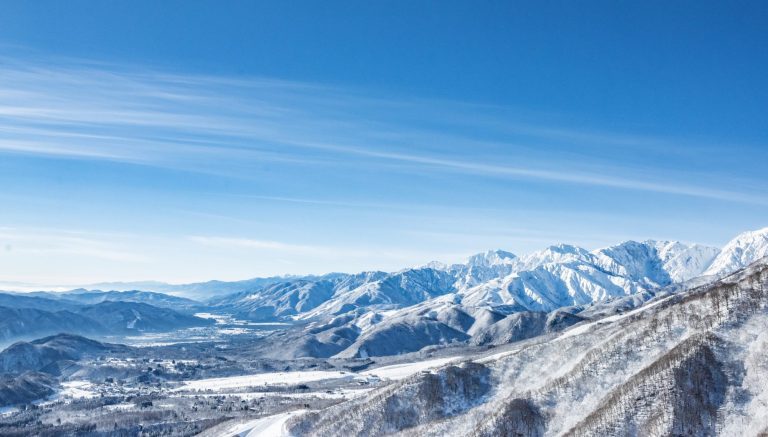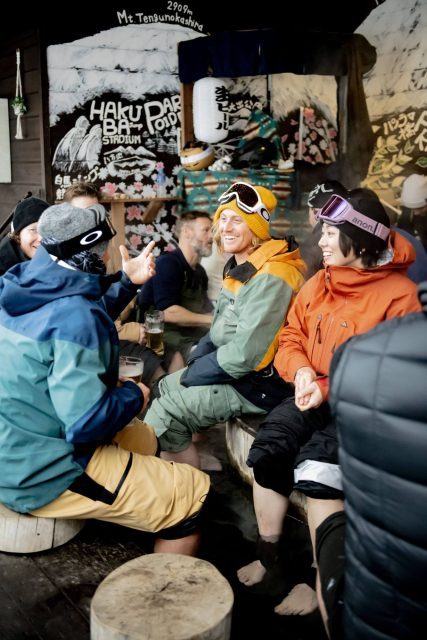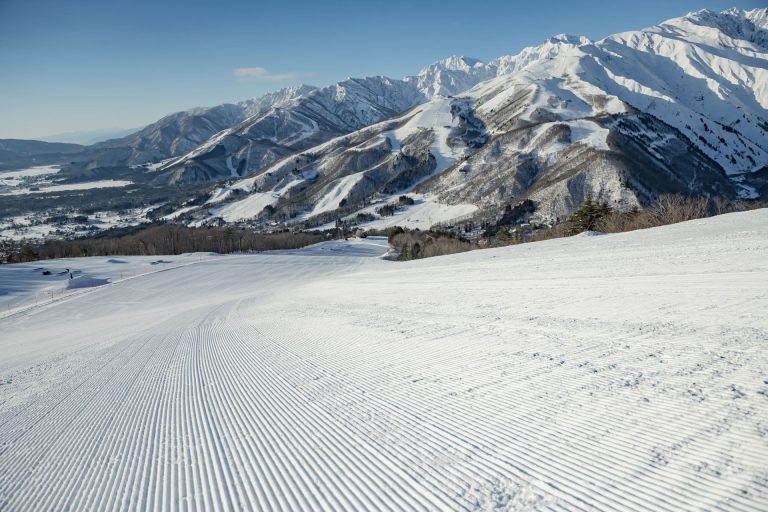There are moments in the life of a skier that mark a turning point—when the usual, however beloved, no longer quite satisfies. The predictable rhythm of the Alps, the lift queues, the fond familiarity of fondue—it all begins to blur. And so, you glance eastward, where mountains wear ancient names, snow falls softer, and ski culture means more than just slopeside schnapps.
This winter, for those UK skiers prepared to venture beyond the ordinary, Hakuba Valley in Japan awaits. Tucked into the Northern Japanese Alps, this isn’t merely another resort—it’s a revelation.
A Valley of Ten Resorts
Unlike Europe’s interconnected mega-resorts, Hakuba Valley is a collection of 10 individual ski areas, each with its own character, terrain, and local charm. They are connected not by lifts, but by an efficient shuttle network included in your lift pass. The ski areas—Happo-One, Goryu, Hakuba 47, Tsugaike, Cortina, Norikura, Iwatake, Sanosaka, Kashimayari, and Jigatake—stretch across a broad mountainous valley and are accessed from various villages.
This structure gives skiers an incredible variety of options. You might spend one day carving groomed cruisers at Iwatake, the next chasing deep powder through Cortina’s legendary tree runs, and another soaking in views from Tsugaike’s high-altitude alpine bowls. Each area is distinct, offering a new flavour of Japanese skiing each day, without ever straying far from your accommodation base.

© Hiroya Nakata.
Powder Dreams in the Japanese Alps
Hakuba is less a resort and more a constellation of ten distinct ski areas, stitched along a dramatic alpine basin near Nagano. This is where the 1998 Winter Olympics left their legacy, where local ryokans still pour matcha with ceremony, and where the snow—light, dry, seemingly conjured from dreams—arrives in staggering volume. Over seven metres fell here last season, and forecasts predict another bumper year thanks to the La Niña weather pattern.
For UK skiers used to Alpine piste-hopping or Pyrenean long lunches, the terrain here is bold and untamed. At its heart is Happo-One, a soaring giant with over 1,000 metres of vertical descent and sweeping runs that once tested Olympians. But that’s just one facet. Cortina beckons freeriders with thigh-deep powder fields and exquisite tree lines. Tsugaike stretches out gentler blues for learners, while Goryu and Hakuba 47 offer interconnected trails and a lift infrastructure that rivals anything in Europe.
Getting There is Half the Adventure
Your journey begins not with a chairlift, but a Shinkansen—Japan’s legendary bullet train—slicing silently from Tokyo to Nagano in just over 90 minutes. From there, a short shuttle ride through snow-dusted valleys delivers you to Hakuba proper. Unlike the often chaotic transfers of Alpine charters, this is travel as art—punctual, smooth, and oddly calming.
Once in-resort, your Hakuba Valley lift pass unlocks not just slopes but connectivity. A free shuttle network links the ten resorts, allowing intrepid skiers to pick a new playground each day.
Après-Ski, the Japanese Way

© Hiroya Nakata.
Don’t come expecting DJs spinning Euro-pop or Jägerbomb marathons. Après-ski in Hakuba is something altogether more refined—a slow exhale in an onsen, steam rising through crisp mountain air. You’ll trade ski boots for wooden geta sandals, clink glasses of local sake, and tuck into soul-warming bowls of ramen, katsu curry or delicate seasonal sashimi.
For those missing the buzz, Echoland and Happo Village do offer izakaya pubs, whiskey bars, and even the odd karaoke lounge. But the prevailing mood is one of quiet camaraderie—skiers swapping powder tales over miso soup, not tequila shots.
Where to Stay
Accommodation in Hakuba is as diverse as its terrain. You’ll find everything from luxury chalets with private onsens to friendly family-run ryokans, where futons are laid out nightly and breakfast is a ritual of rice, fish, and green tea. British travellers often favour basecamps in Happo or Echoland, where English signage and ski rental shops smooth the transition.
But for those willing to embrace the full cultural experience, staying in Iwatake or Tsugaike brings a slice of rural Japanese life—peaceful, snowbound, and wonderfully immersive.
Who Should Go?
Intermediates and experts will adore the sheer scale and variety of the valley. Freeriders will find some of the most rewarding terrain in the world, with backcountry access and deep powder often untouched even by midday. Families are well-catered to with tubing parks, gentle slopes, and multilingual ski schools. And for anyone who’s ever wanted skiing to feel like an adventure again—Hakuba delivers.
Hakuba vs the World

© Hiroya Nakata.
Compared with Europe’s crowded mid-season pistes and ever-climbing prices, Hakuba feels refreshingly untamed. Compared to Niseko, Japan’s more famous resort, Hakuba is less Westernised, more varied, and arguably offers better terrain diversity. Snowfall is comparable, but the cultural depth runs deeper here.
Travel Tips for Brits
- Flights: Best route is into Tokyo (Haneda or Narita), connecting via rail. Budget around £900 return in high season.
- Transfers: JR East Pass and Alpico shuttle services offer seamless options to Hakuba.
- Gear: Hire locally to avoid hauling skis, though serious powder hounds may prefer their own planks.
- When to Go: January–mid-February for deepest snow. March for quieter slopes and longer days.
Final Words
Hakuba is not a trip. It’s a passage—to another pace, another culture, another kind of winter. It reminds us why we fell in love with skiing in the first place: the pursuit of something pure, something exhilarating, something new.
This winter, when the Alps start to feel a little too familiar, answer the call of Hakuba. Pack your skis, your curiosity, and perhaps a phrasebook. The snow will be waiting.

